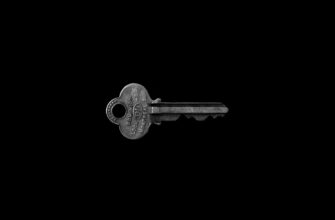🎮 Level Up with $RESOLV Airdrop!
💎 Grab your free $RESOLV tokens — no quests, just rewards!
🕹️ Register and claim within a month. It’s your bonus round!
🎯 No risk, just your shot at building crypto riches!
🎉 Early birds win the most — join the drop before it's game over!
🧩 Simple, fun, and potentially very profitable.
Why Anonymously Encrypting Your Seed Phrase Is Non-Negotiable
Your cryptocurrency seed phrase is the master key to your digital wealth. Unlike passwords, it cannot be reset if compromised. While storing it offline is essential, encryption adds a critical layer of security—especially when done anonymously. Anonymous encryption ensures no digital footprint links the encrypted data to your identity, shielding you from targeted attacks, surveillance, or accidental exposure. In an era of sophisticated cyber threats, combining encryption with anonymity transforms your seed phrase from a vulnerability into a fortress.
7 Best Practices to Encrypt Seed Phrases Anonymously
- Use Air-Gapped Devices for Encryption
Perform all encryption tasks on a device permanently disconnected from the internet (e.g., a dedicated offline laptop or Raspberry Pi). This prevents malware or spyware from leaking data during the process. - Leverage Open-Source Encryption Tools
Opt for audited, open-source software like VeraCrypt or GPG. Avoid proprietary tools where code transparency is lacking, as backdoors could compromise anonymity. - Generate Keys Offline & Anonymously
Create encryption keys using offline entropy sources (e.g., physical dice rolls for passphrases). Never use online password generators tied to your identity. - Apply Multi-Layer Encryption (Nested Encryption)
Encrypt your seed phrase multiple times with different algorithms (e.g., AES-256 + ChaCha20) and keys. This “onion approach” requires attackers to breach multiple layers. - Never Store Digital Metadata
After encryption, scrub all metadata from files. Use tools like MAT2 or manual methods to remove timestamps, geolocation, and creator IDs from encrypted containers. - Physically Isolate Backup Locations
Store encrypted copies in geographically separate, anonymous locations (e.g., bank safe deposit boxes under a pseudonym or tamper-proof buried containers). - Destroy All Digital Traces
Wipe encryption devices using tools like DBAN after the process. Burn handwritten drafts with fire or use cross-cut shredders to eliminate recoverable fragments.
Critical Mistakes That Jeopardize Anonymity
- Cloud Storage Backups: Storing encrypted files on Google Drive or iCloud links them to your identity via account metadata.
- Reusing Personal Passphrases: Avoid passwords from your social media or email history—they create forensic links.
- Encrypting on Main Devices: Daily-use computers likely contain identifying software, cookies, or hardware IDs.
- Ignoring Physical OpSec: Surveillance cameras capturing your storage locations or handwritten notes negate digital anonymity.
Tools & Methods for Anonymous Encryption
Tails OS: A live operating system booted via USB that forces all traffic through Tor and leaves no digital trace on hardware. Ideal for creating encrypted volumes.
Paper-Based Encryption: Manually encode seed phrases into ciphertext using one-time pads or steganography (e.g., hiding within innocuous text in a printed book).
Hardware Signing Devices: Devices like Coldcard allow seed phrase encryption directly on the wallet, isolating keys from internet-connected systems.
FAQ: Encrypting Seed Phrases Anonymously
Q: Is encrypting a seed phrase better than splitting it?
A: Use both. Encryption protects against physical theft, while splitting (via Shamir’s Secret Sharing) adds redundancy. Combine encrypted shards stored anonymously.
Q: Can biometrics (e.g., fingerprints) secure encrypted seed phrases?
A: Avoid biometrics. They create immutable identity links and can be legally compelled. Cryptographic keys offer true anonymity.
Q: How often should I update my encryption?
A: Only when your threat model changes (e.g., after a breach) or every 3-5 years to counter advancing decryption tech. Frequent changes increase exposure risk.
Q: Are password managers safe for storing encryption keys?
A: Not for anonymity. Most sync data to cloud servers tied to your identity. Use offline, encrypted key storage like metal plates or analog methods.
Q: What if I forget my encryption passphrase?
A: Your funds are irrecoverable. Store passphrase hints—not the phrase itself—in a separate anonymous location (e.g., a safe with instructions only you understand).
Final Note: Anonymously encrypting your seed phrase demands meticulous execution but delivers unparalleled security. Treat your encryption keys with the same secrecy as the seed phrase itself—because without anonymity, encryption is only half-complete.
🎮 Level Up with $RESOLV Airdrop!
💎 Grab your free $RESOLV tokens — no quests, just rewards!
🕹️ Register and claim within a month. It’s your bonus round!
🎯 No risk, just your shot at building crypto riches!
🎉 Early birds win the most — join the drop before it's game over!
🧩 Simple, fun, and potentially very profitable.








